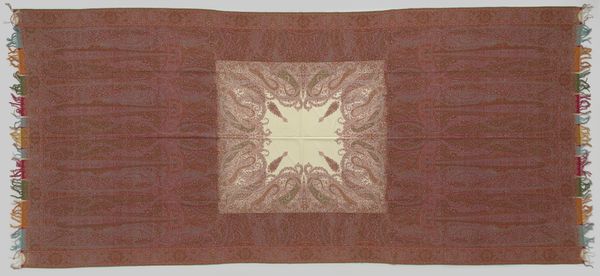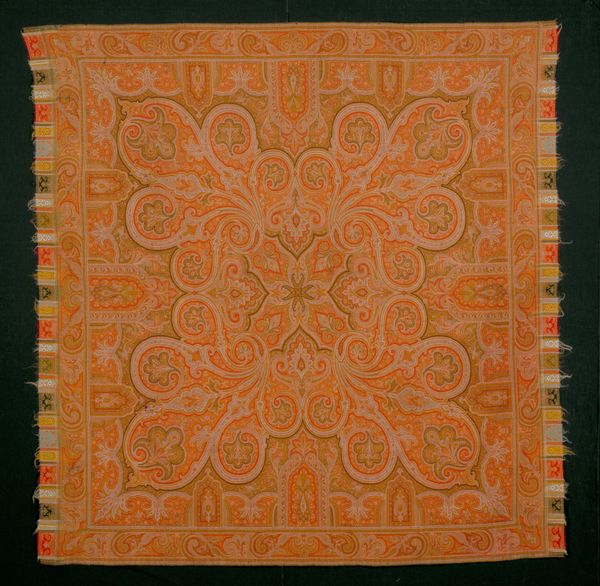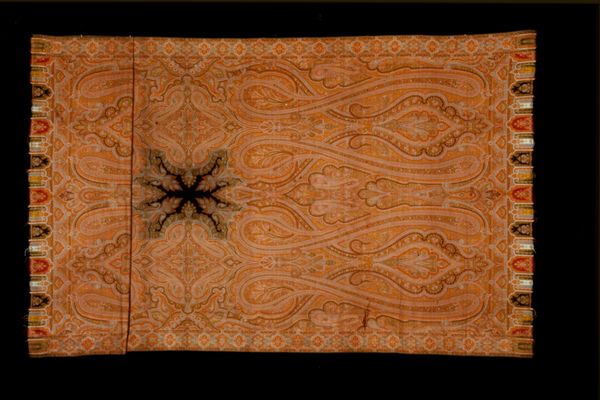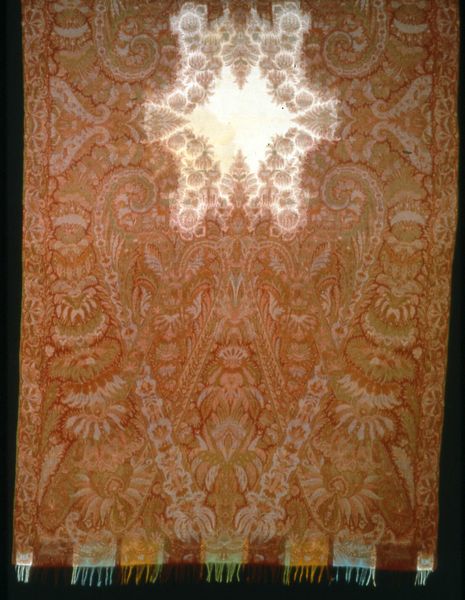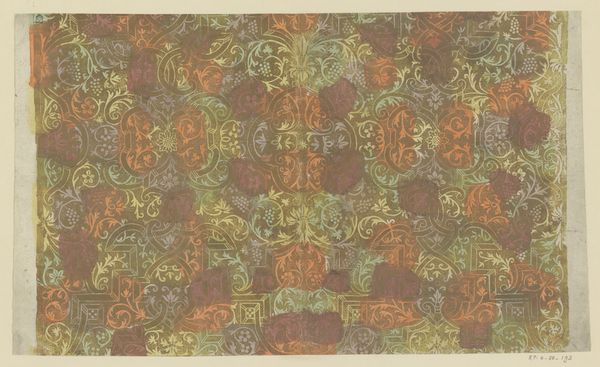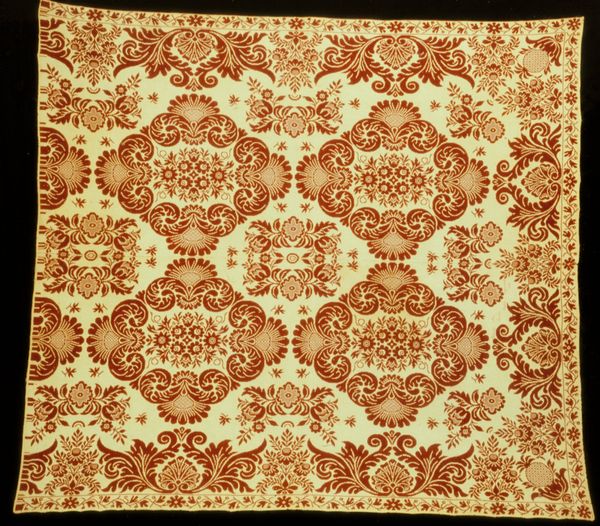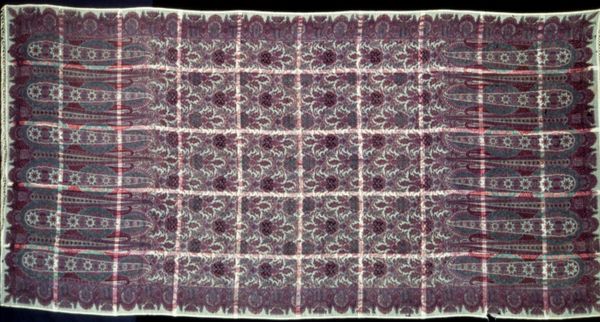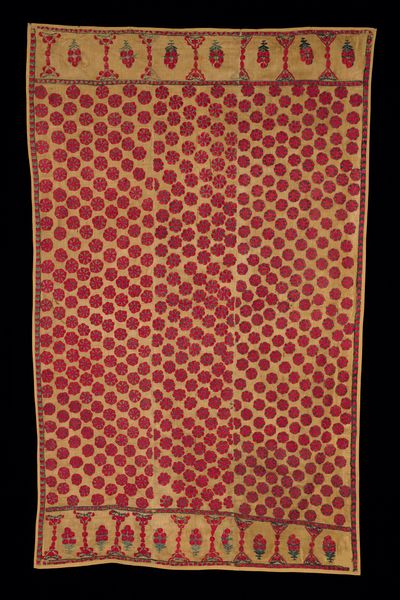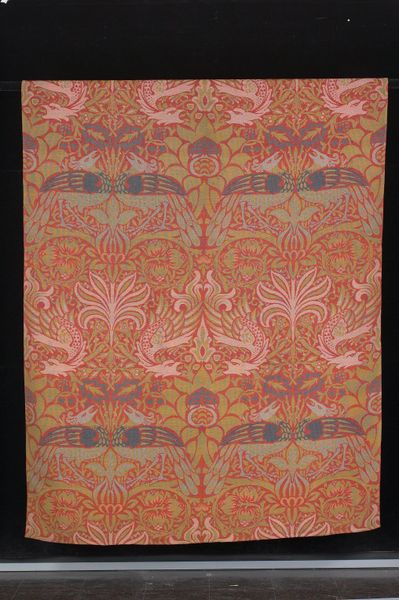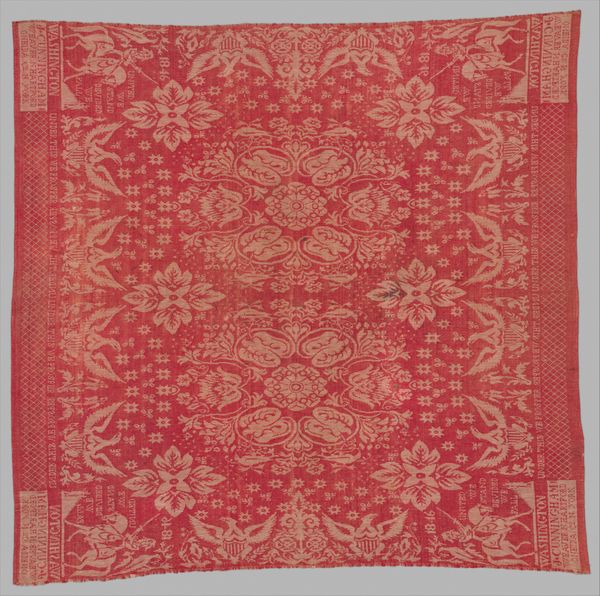
fibre-art, silk, textile
#
fibre-art
#
silk
#
pattern
#
textile
#
geometric pattern
#
organic pattern
#
romanticism
#
france
#
repetition of pattern
#
pattern repetition
#
decorative-art
#
erotic-art
Dimensions: 62 1/8 x 126 in. (157.8 x 320.04 cm)
Copyright: Public Domain
Curator: This beautiful shawl, dating from approximately the mid-19th century, is of unknown authorship, but represents French textile production of the time. It resides here at the Minneapolis Institute of Art. Editor: It’s arresting. The terracotta colour combined with the density of the pattern almost overwhelms the senses. It gives me a sensation of contained heat. Curator: Precisely. Shawls like this weren't mere fashion accessories. They were potent signifiers of social status, and increasingly tied to burgeoning consumerism, particularly with French manufacturing and global trade routes expanding rapidly. Editor: The pattern itself is so intricate. There is the dominating presence of the paisley design, and it's visually multiplied across the material. Do you think that replication speaks to some kind of standardization or societal expectation, in that period? Curator: Absolutely. By the 19th century, you see the influence of industrial processes start to reshape design and culture. While some patterns may seem purely decorative, they mirror and often reinforce prevailing social and political norms, influencing ideas around identity, especially for women. It would be so telling to understand the lived experiences of those who owned and wore such shawls. Editor: Thinking about the erotic nature implied in one of the tags, does this accessory give freedom or limitation? Its softness implies sensuality, and yet its shape provides constraint. Curator: A good question that encapsulates art historical analysis in general! It presents this era as being rife with contradiction; it suggests how much an item like this acted as a carrier for social anxieties and burgeoning freedoms, all at the same time. The complex design both liberates and binds in its visual narrative. Editor: It feels almost… oppressive, with its warmth and ornamentation. Almost like a gilded cage. Curator: Yes! It represents this material reality perfectly, the tensions in what they sought, as well as what was imposed. That’s what makes it a particularly compelling piece for understanding history. Editor: Thinking about what that patterned surface reveals—that makes me look at shawls very differently from now on. Curator: Agreed; I will see all textile art through another lens too!
Comments
No comments
Be the first to comment and join the conversation on the ultimate creative platform.
